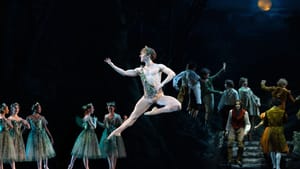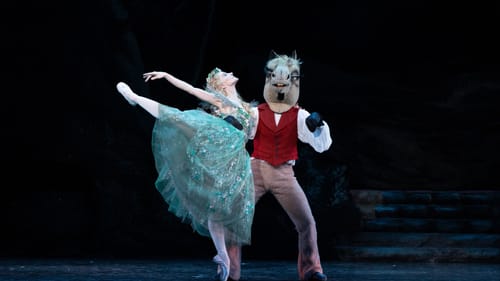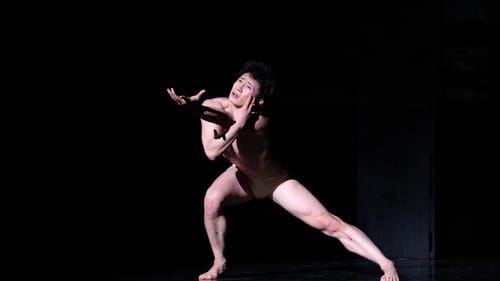Stay in the Loop
BSR publishes on a weekly schedule, with an email newsletter every Wednesday and Thursday morning. There’s no paywall, and subscribing is always free.
Choreography and character
The Philadelphia Ballet presents The Dream and Prodigal Son

The Philadelphia Ballet closed its season with Shakespeare and the Bible: Frederick Ashton’s crowd-pleasing The Dream, based on Shakespeare’s A Midsummer Night’s Dream, and George Balanchine’s strange and wonderful Prodigal Son. In both ballets, the dancers executed difficult choreography while making us believe in their characters. I was enthralled.
Beauty, mischief, and hilarity
Ashton choreographed The Dream to celebrate Shakespeare’s 400th birthday. In a moonlit forest filled with the faerie court in green tulle, Queen Titania and King Oberon quarrel over a changeling child. In revenge, Oberon sends his servant Puck to drug the queen with a magic flower: she will fall in love with the first creature she meets. The fay are capricious and dangerous, though it’s easy to forget that because of their beauty (as humans have throughout time). Oksana Maslova as Titania danced so lightly, each movement a flutter of faerie wings, that one almost believed faeries were real. Her reconciliation pas de deux with Jack Thomas’s Oberon melted hearts when she curled into his cradling arms.
But the ballet belonged to Ashton Roxander’s comedic Puck, the embodiment of faerie mischief. He scrambled the hearts of the humans in the tale who made a quartet of changing partners and a riotous battle between rivals Sterling Baca and Pau Pujol with raised fists and gymnastic tumbles. But from the moment he bounded on stage, all mischief and springs for legs, Roxander owned the performance. He made us gasp with his pyrotechnics, embodying the youthful sprite in his quick, precise execution of so many jumps that one could be forgiven for thinking he could fly. Roxander is the third in his family to dance the role—his father, David, was the first of them to perform it, and his brother Jake danced the role last year. They both wore their father’s costume (Roxander’s name was still inside the one-shouldered leopard costume), so there might have been a bit of family competition to spur the performance.

I loved Puck, but Jack Sprance, as Bottom, was the most hilarious thing I have seen in ballet, and that includes the dancing chickens in La Fille Mal Gardée. Sprance’s head and shoulders were covered by the donkey head, but his whole body expressed confusion at his transformation and then his delight at discovering that the faerie queen loved him. (That pesky magical flower!) Sprance pranced and pawed the ground, and his pointework was exquisite—a moment of humor but so gracefully done I could have watched him dance forever.
The Prodigal and the Siren
Balanchine created Prodigal Son in 1929 for Sergei Diaghilev’s Ballet Russe, and the cast, with just one woman in a prominent role, made it an oddity for a story ballet even then. But it has survived due to the powerful emotions of the story and its innovative stark movement, heightened by George Rouault’s design, backdrops of a domed city by the sea, and a tent with the flaps held wide, sketched out with thick strokes like stained glass.
The ballet filled in the parts of the story that the parable leaves out: Zecheng Liang as the Prodigal danced the opening with explosive energy and skill, leaping over a fence as he escaped the confines of home. Then we followed him into the city where he met the goons, a sort of Greek chorus. With their low, rhythmic stomping and their swaying tight tiers, they watched and facilitated the newcomer’s downfall. As the Prodigal fell into debauchery, Liang’s emotional portrayal deepened. We saw the braggadocio of his carousing with giant leaps, and with a gesture like the pull of a bow, he stood atop a precariously tilted table (the fence, turned upside down).

In a Zoom panel discussion, Balanchine repetiteur Colleen Neary said that the siren has to dominate the prodigal, and Dayesi Torriente was chilling in the role. She appeared as a shock of color in a tall jeweled crown, trailing a long red cape that she curled around her upper leg to be sure we got the erotic message. The cape draped behind her as she crab-walked across the stage, one leg lifted at each tortuous step, then fell away as she stood hip-shot in invitation. En pointe she towered over Liang’s Prodigal, wrapping her free leg around his waist as he turned them in a slow circle. Her control was exquisite, like a praying mantis about to bite off his head.
He survived the encounter; but, robbed and left nearly naked by his drinking companions, Liang leaned against a pillar (the fence again, at a different angle). Exposed physically and emotionally, he curled into himself at its base. When next we saw him, he was in rags, crawling across the stage toward home, where his father’s arms welcomed him. It’s a unique piece performed brilliantly here with Liang’s emotional commitment to the journey, from hubris to despair to reconciliation, set against the glorious temptation of Torriente’s dominatrix.
What, When, Where
The Dream, choreography Frederick Ashton; Prodigal Son, choreography by George Balanchine. Philadelphia Ballet. $22-$267 (plus a 10-percent processing fee). May 9 through 12, 2024, at the Academy of Music, 240 S Broad Street, Philadelphia. (215) 893-1999 or philadelphiaballet.org.
Accessibility
The Academy of Music is a wheelchair-accessible venue with accessible seating locations available in advance.
Sign up for our newsletter
All of the week's new articles, all in one place. Sign up for the free weekly BSR newsletters, and don't miss a conversation.

 Camille Bacon-Smith
Camille Bacon-Smith